Financial Management Assignment: FIN5FMA, Semester 1, 2019
VerifiedAdded on 2022/12/27
|5
|640
|30
Homework Assignment
AI Summary
This document presents a solution to a financial management assignment (FIN5FMA) focusing on capital structure and its relationship with tax rates and investment decisions. The assignment addresses the impact of changes in personal tax rates on interest, dividends, and capital gains, and their effect on a company's capital structure. It also explores the implications of investment choices on operating leverage and business risk. The solution analyzes how organizations should use debt and equity in their capital structures, and how automation levels can affect operating leverage and overall risk. The assignment covers key financial concepts and theories related to capital budgeting and financial decision-making, offering insights into practical applications within the field of finance.
1 out of 5
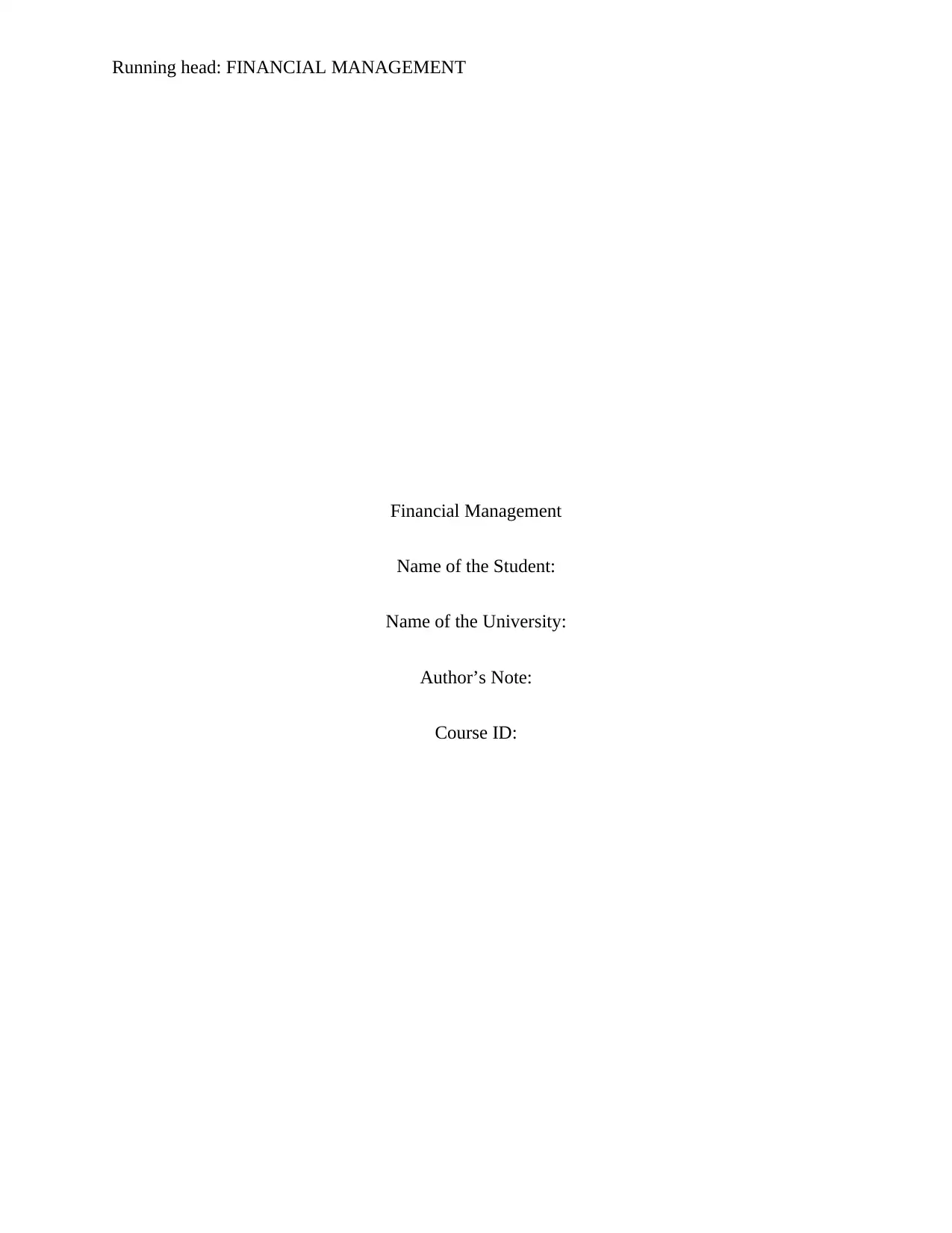
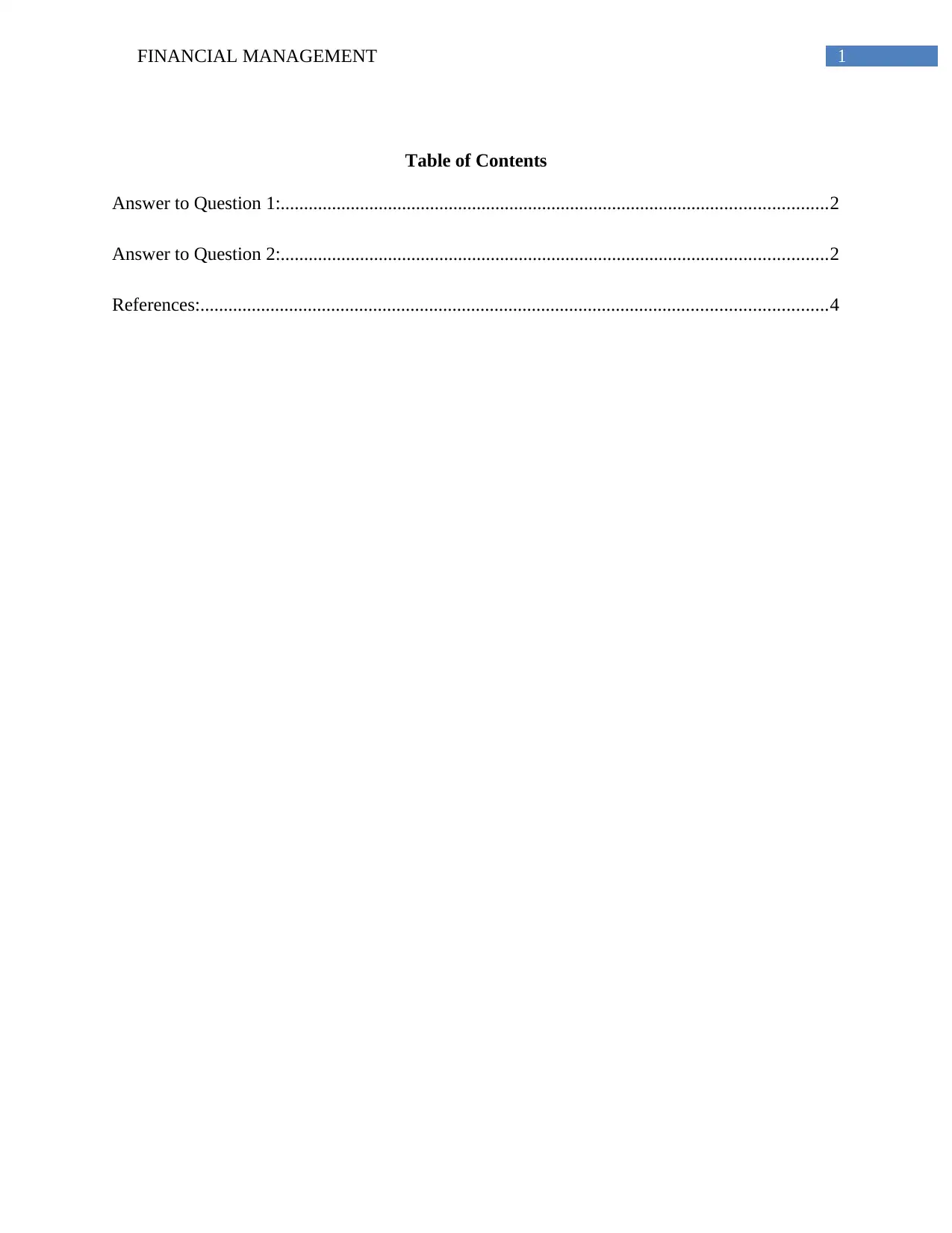
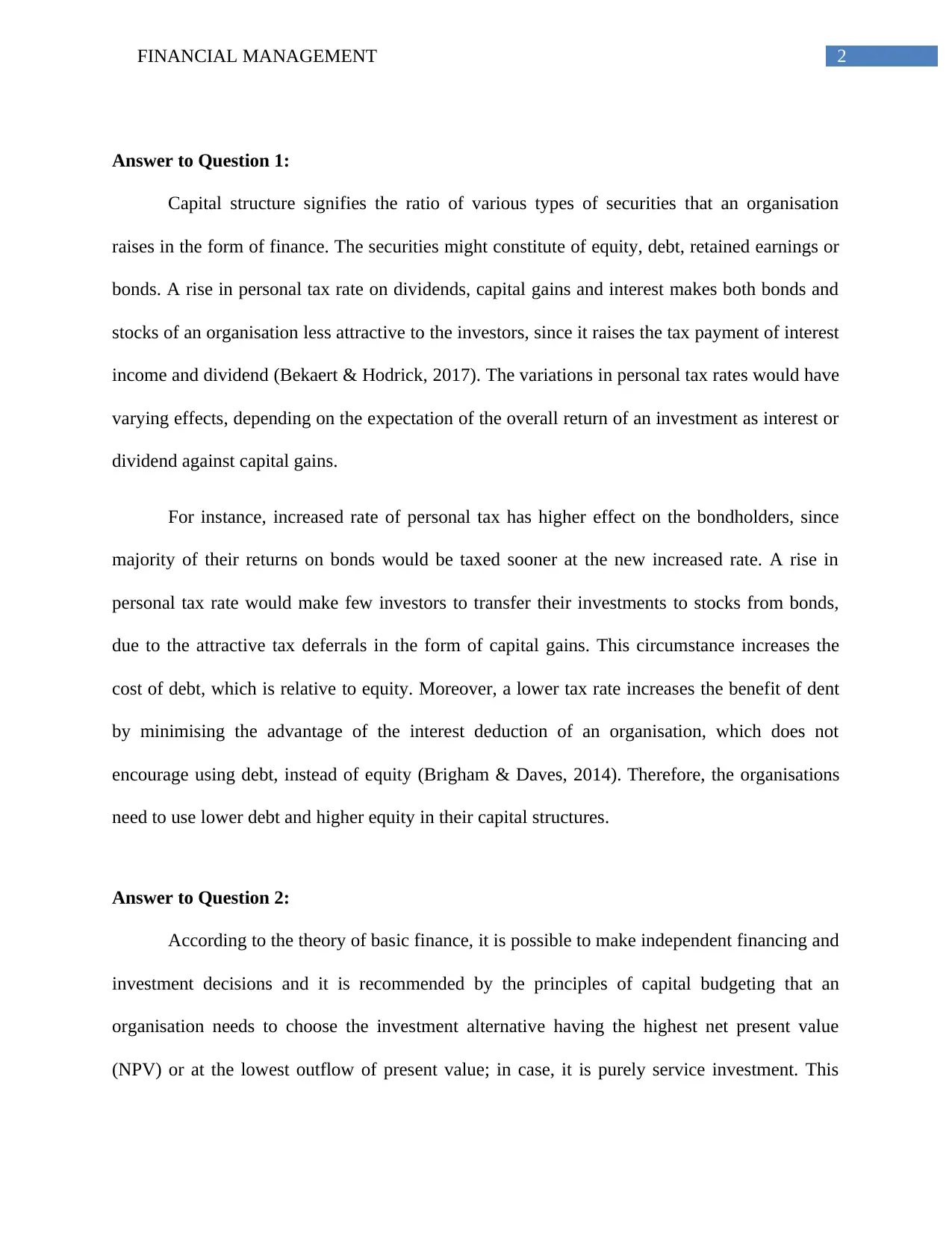

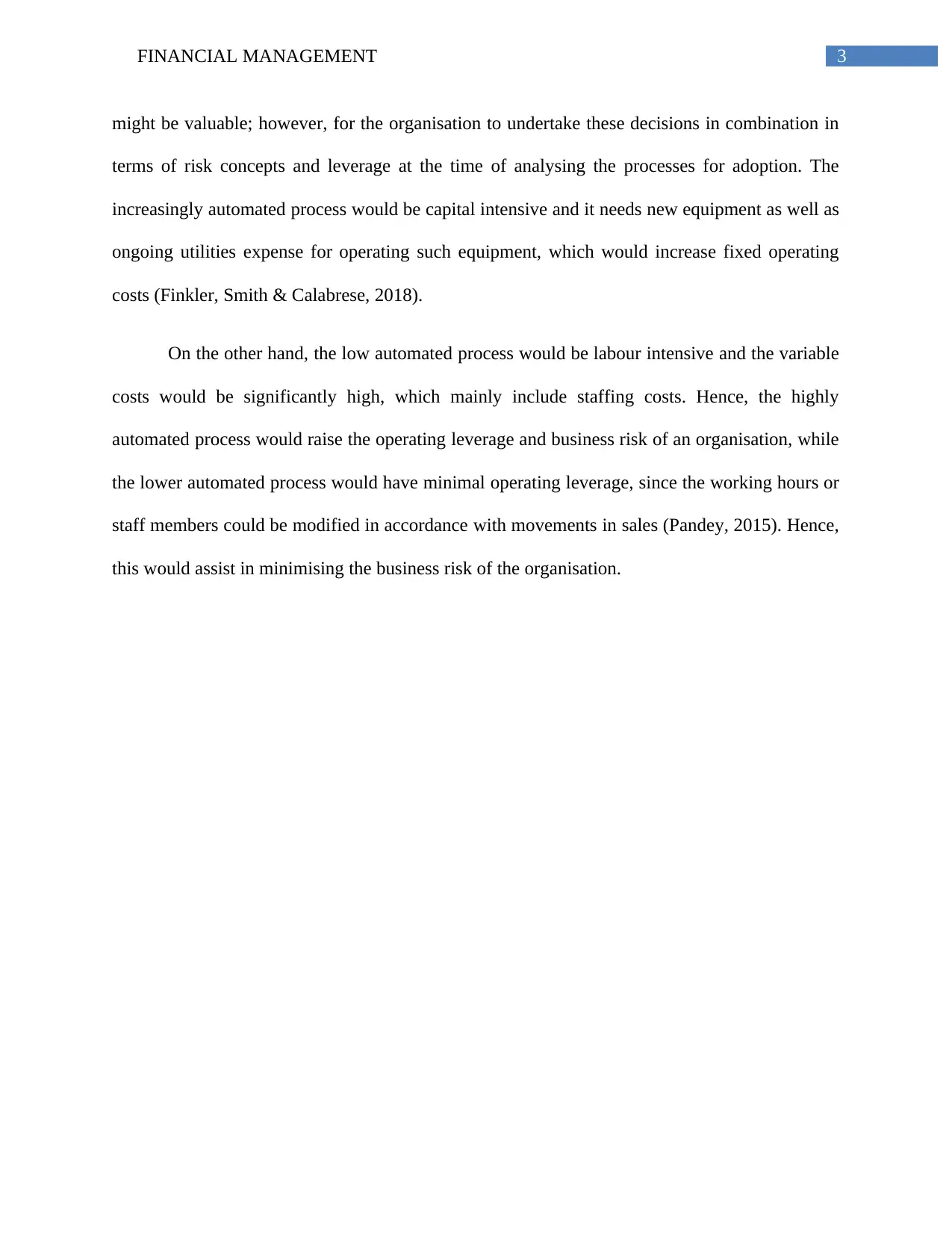
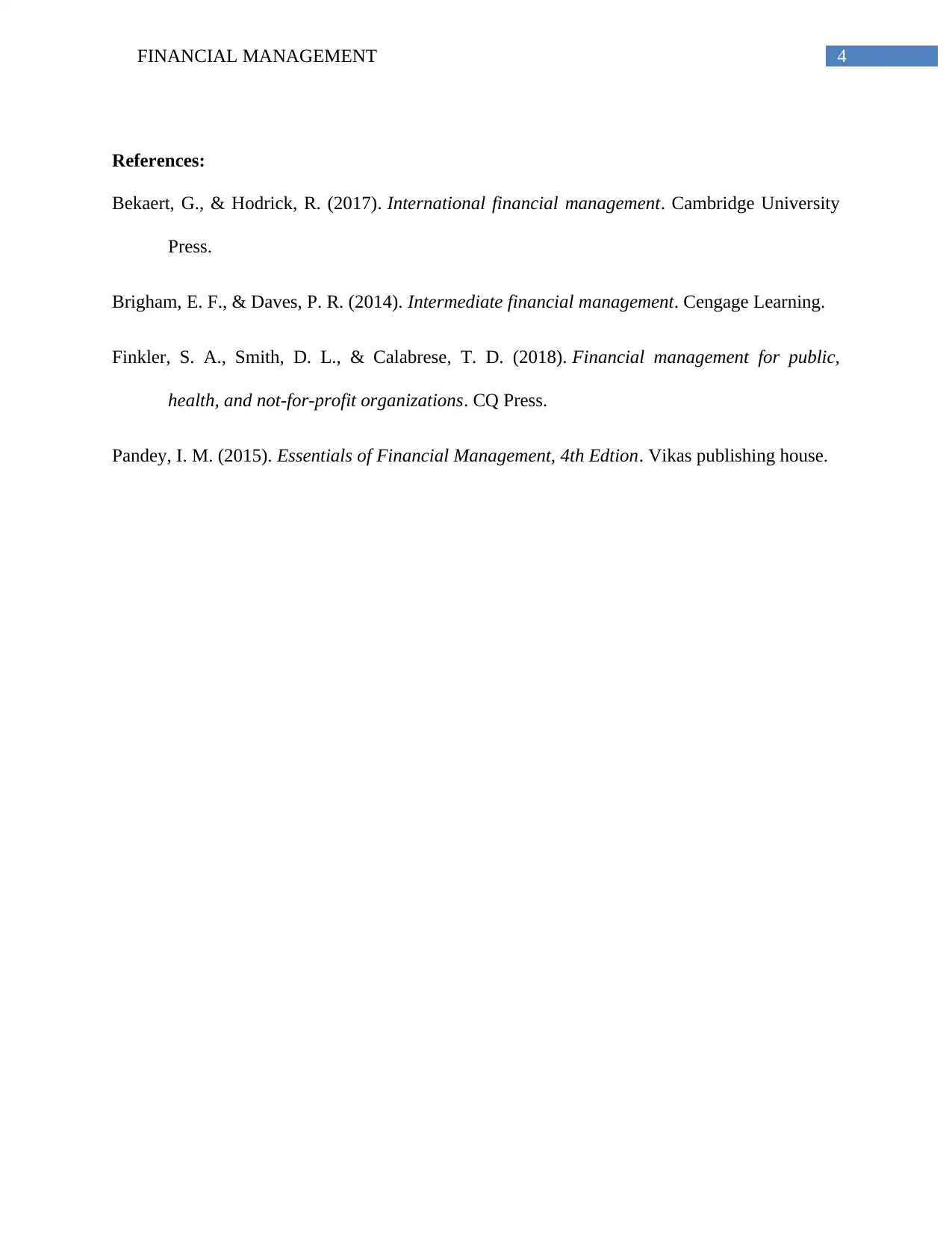





![[object Object]](/_next/static/media/star-bottom.7253800d.svg)